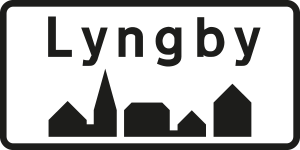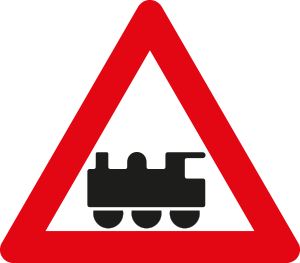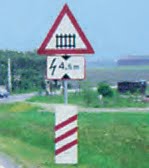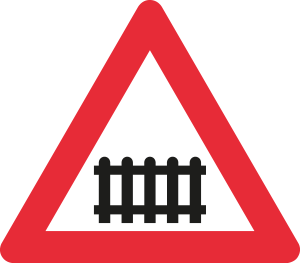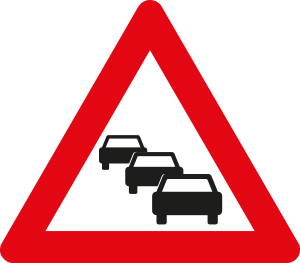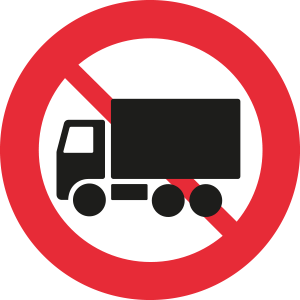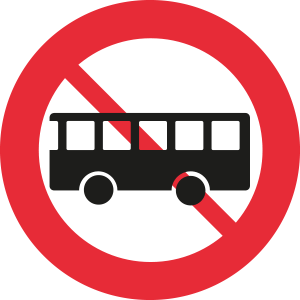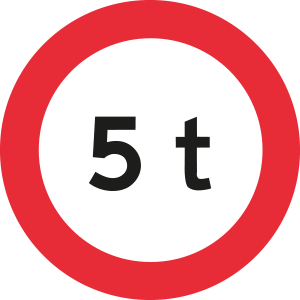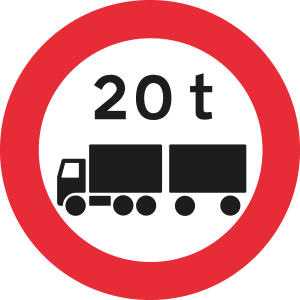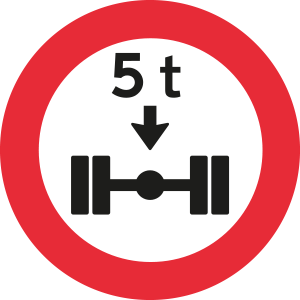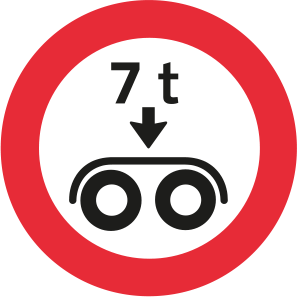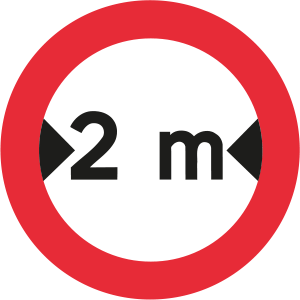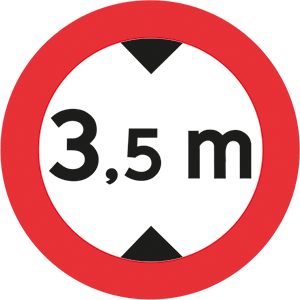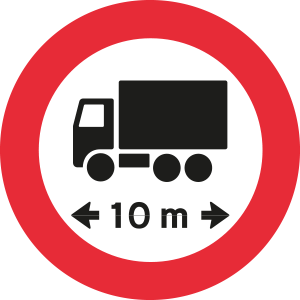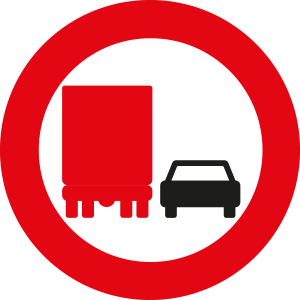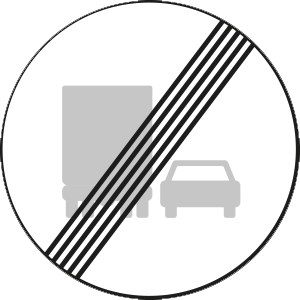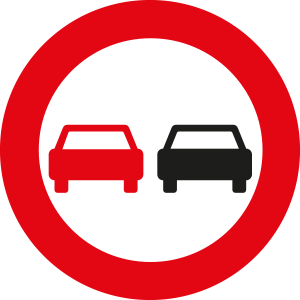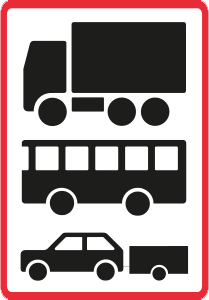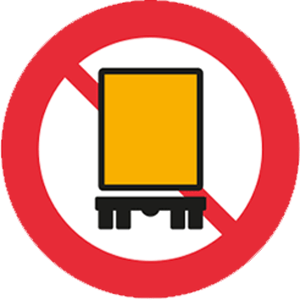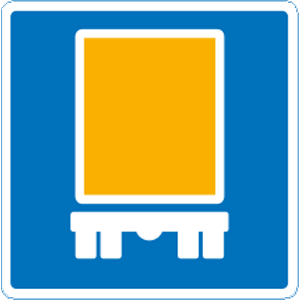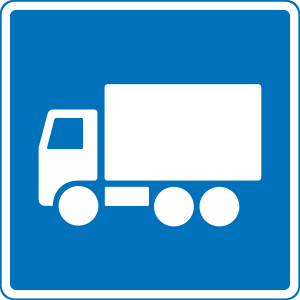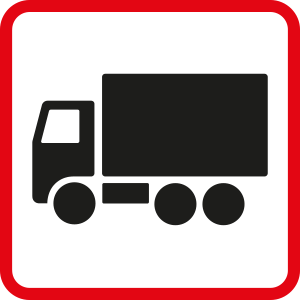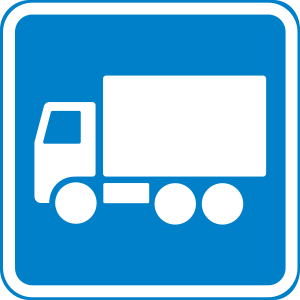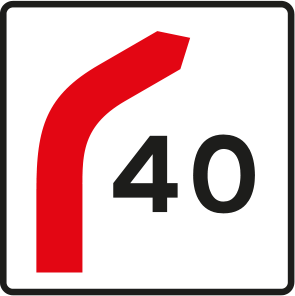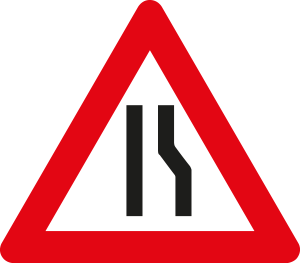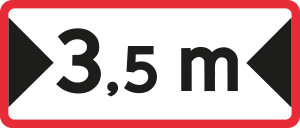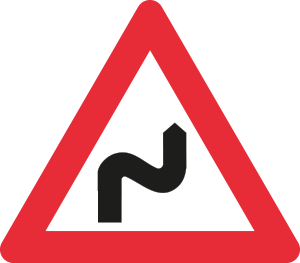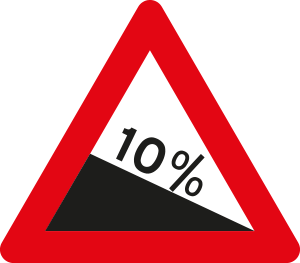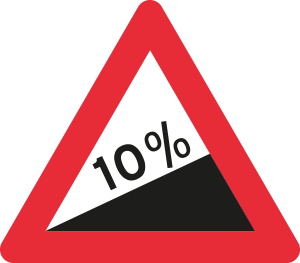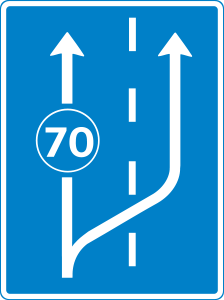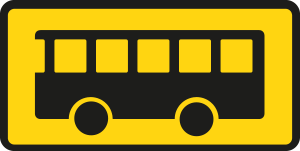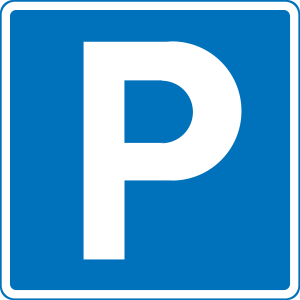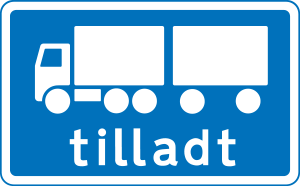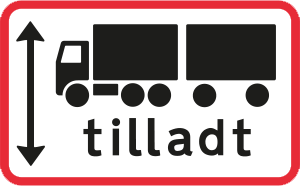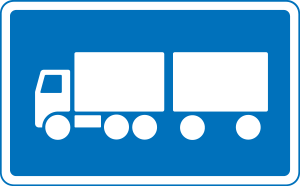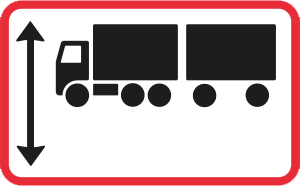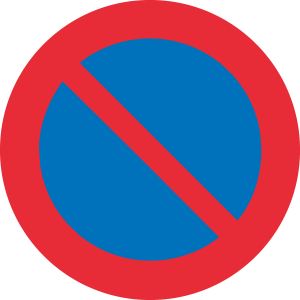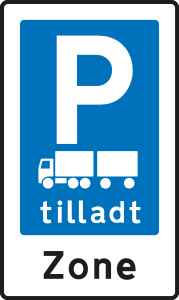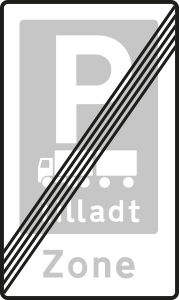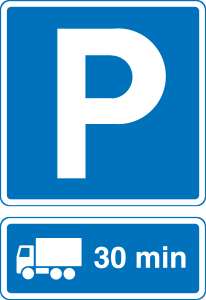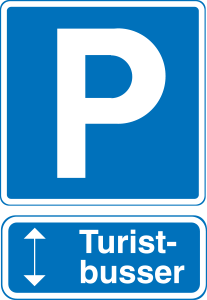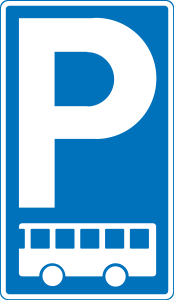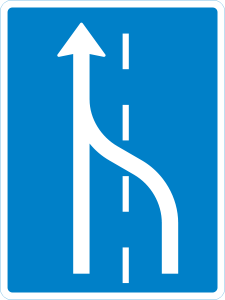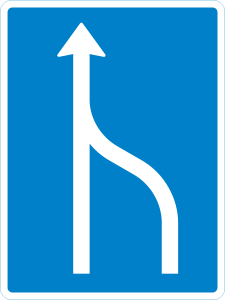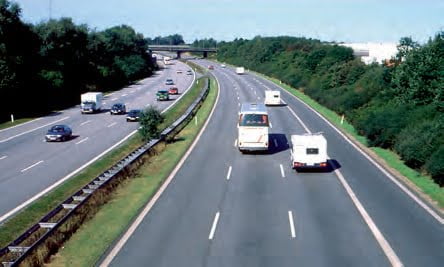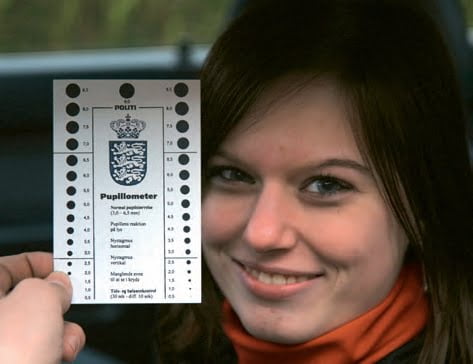large cars
Driving school
theory book
for category C - D - C/E - D/E
Large cars and lorries
Large cars - Categories C and D.
10. Special provisions etc. for large cars and lorries.
Bus up to 3500 kg gross vehicle weight - 80 km/h.
- On motorways, if the use is for purely private purposes - 130 km/h.
- On motorways, if the use is for both commercial and non-commercial driving, buses MUST be equipped with a speed limiter on new registration, set so that the speed cannot exceed - 100 km/h.
Bus over 3500 kg gross vehicle weight and articulated bus - 80 km/h.
Bus with trailer - 80 km/h.
Truck over 3500 kg gross vehicle weight - 80 km/h.
Truck with trailer - 80 km/h.
Large cars w/o trailer are allowed to drive on motorways - 80 km/h.
Overtaking with a lorry is forbidden
The sign prohibits overtaking by lorries and articulated lorries. The prohibition does not apply when overtaking two-wheeled bicycles and two-wheeled mopeds that are not subject to registration ("small"). It may be indicated on a sub-sign that overtaking by other types of vehicles (e.g. buses) is also prohibited.
Motorway only
Overtaking is prohibited for the vehicles shown on the sub-sign. The overtaking ban can be time-limited, e.g. to regular weekdays 06-18. However, for articulated lorries on the motorway, the "windmill wing order" allows you to overtake if a speed difference of between 20 and 30 km/h is achieved.
Creep track
The sign indicates a special lane to be used by vehicles travelling at a lower speed than that indicated for the rest of the lane. In connection with the end of the creeping lane, it is the maintenance or end of the wide kerb line that determines whether the lane change rule or the merge rule applies.
Special traffic signs at areas where large cars and trailers are allowed to park in otherwise restricted areas
Parking reserved for certain vehicles (in the example shown, lorries and trailers):
Zone parking
Zone parking authorises parking in a specific area.
The Minister of Transport may temporarily prohibit the movement of heavy vehicles during periods of thaw or under similar special conditions.
Announcements are made in the press and by displaying road signs, typically actual gross vehicle weight or actual axle loads.
Lane changing and merging
Where two lanes merge, either the lane change rule or the merging rule applies. When changing lanes, you must ensure that you do not cause danger or unnecessary inconvenience to road users coming from behind. When merging, road users must show mutual consideration for each other.
Unconditional right of way
This means that there is a right of way for traffic from both the right and the left.
Right-hand give way
In other words, hold back traffic from the right and make sure that traffic from the left honours their right of way. The right of way is typically found on lightly trafficked roads.
Driving on motorways
REMEMBER the "new" rule on the mandatory use of turn signals when driving on motorways. (At every merge, lane change and overtaking, as well as when entering and exiting the motorway).
Turn signals MAY be used in conjunction with the same manoeuvre on other roads.
Hazard warning lights MUST be used in the event of unexpected congestion or other immediate danger on a motorway.
Emergency flashers MAY be used in the event of unexpected traffic jams or other immediate danger on other road types.
When driving on a motorway with more than two lanes in the same direction, vehicles over 3500 kg and combinations of vehicles with a length of more than 7 metres may only use lanes one and two.
Speeding offences
Regarding any violation of applicable speed regulations, the penalty framework will typically be: "minor" exceeding = fine, exceeding more than 40% = fine, conditional suspension of the driving licence and a driving test (theory and practical driving test).
REMEMBER that 3 "points" within 3 years will result in a conditional disqualification (a speeding offence of more than 30% will result in 1 "point").
A suspended sentence for any offence always triggers a theory test and a practical test.
The general rule is that the tests are taken in the vehicle type in which the offence was committed.
Liquor rules etc.
The former term "drink-driving" no longer exists. When the blood alcohol level exceeds 0.5, it is always called "drink driving".
A first-time offence without an accident with a blood alcohol level of 0.51 and up to 1.2 results in a 3-year suspended licence and a hefty fine.
Participation and completion of an AT course (alcohol and traffic).
A blood alcohol level exceeding 1.2 and in repeat cases with lower blood alcohol levels will always result in an unconditional suspension of the driving licence (minimum 3 years).
In connection with reinstatement, tests must be taken for all categories you wish to reinstate.
A new legal provision has been introduced that a road user can be required to provide a sweat or saliva sample (drug testing).
